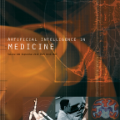Intelligent tutoring systems (ITSs) that imitate human tutors and aim to provide immediate and customized instructions or feedback to learners have shown their effectiveness in education. With the emergence of generative artificial intelligence, large language models (LLMs) further entitle the systems to complex and coherent conversational interactions. These systems would be of great help in language education as it involves developing skills in communication, which, however, drew relatively less attention. Additionally, due to the complicated cognitive development at younger ages, more endeavors are needed for practical uses. Scaffolding refers to a teaching technique where teachers provide support and guidance to students for learning and developing new concepts or skills. It is an effective way to support diverse learning needs, goals, processes, and outcomes. In this work, we investigate how pedagogical instructions facilitate the scaffolding in ITSs, by conducting a case study on guiding children to describe images for language learning. We construct different types of scaffolding tutoring systems grounded in four fundamental learning theories: knowledge construction, inquiry-based learning, dialogic teaching, and zone of proximal development. For qualitative and quantitative analyses, we build and refine a seven-dimension rubric to evaluate the scaffolding process. In our experiment on GPT-4V, we observe that LLMs demonstrate strong potential to follow pedagogical instructions and achieve self-paced learning in different student groups. Moreover, we extend our evaluation framework from a manual to an automated approach, paving the way to benchmark various conversational tutoring systems.
翻译:暂无翻译




